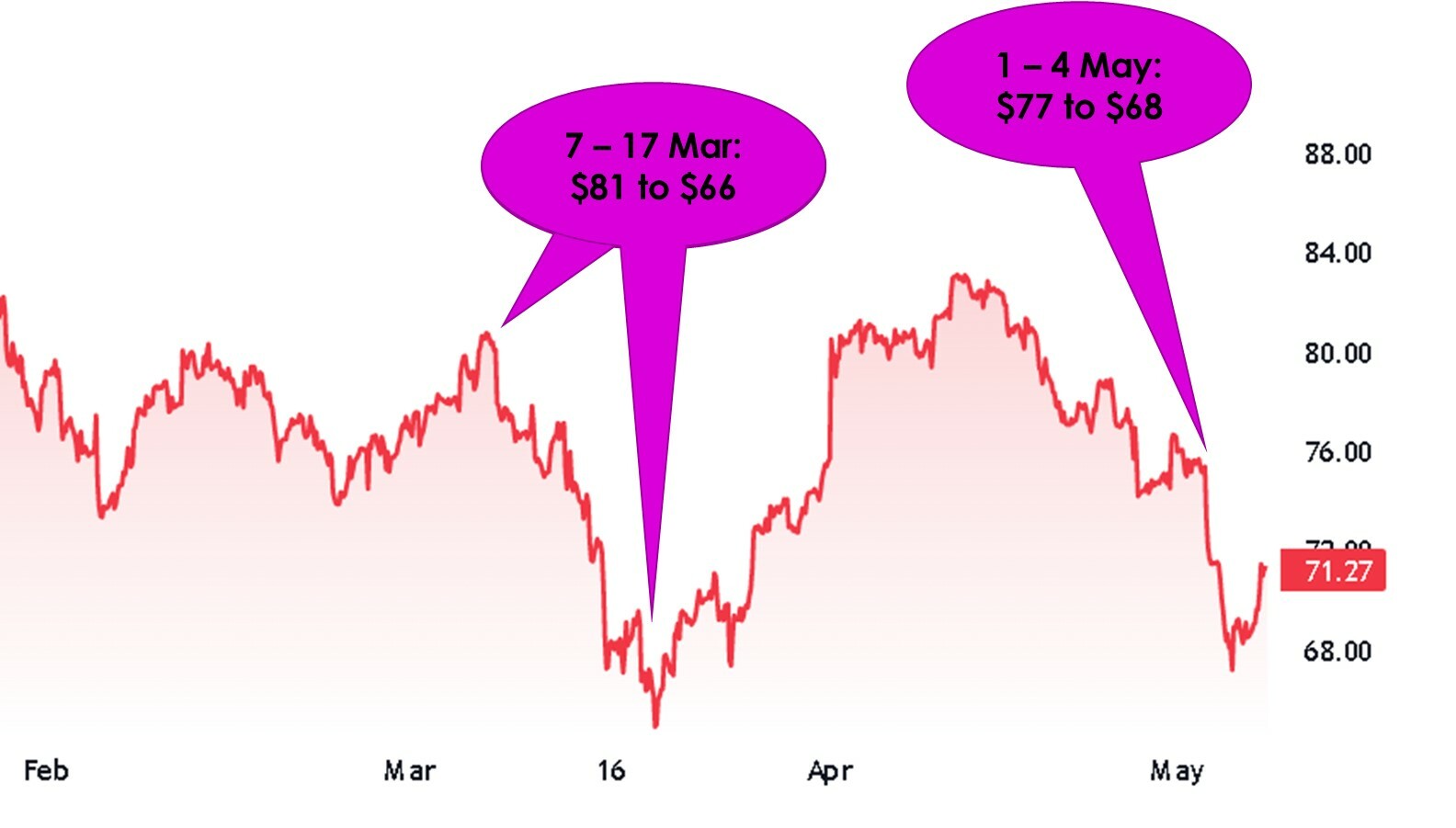The ongoing banking sector crisis has already claimed the scalps of three US banks – Silicon Valley Bank (SIVB), Signature Bank (SBNY), and most recently, First Republic Bank (FRC). European banking giant Credit Suisse (CS) is also on the casualty list. While many analysts and investors are speculating about the current and future impact of the crisis on the stock market, there is a concern more relevant to energy commodity traders – what is the effect of the banking crisis on oil?
The Link Between the Stock Market and Energy Commodities
There is, undoubtedly, a strong link between what is happening on stock exchanges around the world and the developments in key commodity markets, including energy commodities. Many investors, institutional and retail alike, prefer to diversify their portfolios across different markets. This results in an active flow of capital between equities and energy commodities.
The diversification and flow of capital inevitably make the oil market dependent, to varying degrees, on stock market events.
Besides diversification strategies, another phenomenon that tends to link oil and the stock market is the so-called “flight to safety”. A flight to safety occurs when at times of market uncertainty or fear, investors shift their capital towards less risky financial products. The oil market is considered quite a bit more volatile than the stock market in general.
This presumes that when markets are rattled by crisis events, there is always a possibility of investors fleeing from oil towards the less volatile asset class – equities, perhaps just not of the banking kind.
In short, any significant unnerving stock market event, and this year’s banking crisis is truly one, holds the potential to affect oil. To see whether this has been happening so far, we have taken a look at the recent performance of the key energy commodity within the context and timing of the banking crisis. Below is what we have found out.
The Timeline of the Banking Crisis
Before jumping to our analysis, we would like to provide a quick reminder of the key events and dates. So far, there have been two critical time periods concerning the crisis. The first period is early to mid-March, specifically between 8 to 15 March, when the following less than pleasant events took place:
· 8 March – Silicon Valley Bank’s stock starts its precipitous fall
· 10 March – The bank fails
· 12 March – A second US bank, Signature Bank, is shut down by the regulators, the first US bank failure to occur on Sunday
· 15 March – the crisis goes international, with Swiss-based Credit Suisse experiencing a massive fall. Within days, the banking giant would be acquired by its rival compatriot, UBS
The second period of the crisis started on 25 April, with another regional US bank failure – First Republic Bank (FRC). The bank has now been acquired by JP Morgan Chase. It is still too early to speculate on how profoundly the FRC failure will affect the market. As of now, many investors are clearly fearful about the possibility of further bank stock failures and the contagious effect they might have on the entire market.
Let’s have a look at the major developments for oil around the time of these two critical banking crisis stages.
The Impact of the Banking Crisis on Oil
Unlike most other commodities, oil has so far been significantly affected by the banking sector crisis. Oil had stayed in the mid to high $70s in early 2023 before the panic linked to Silicon Valley Bank started on 7 and 8 of March.
Oil price from February 2023 to early May 2023

Image source: Yahoo Finance; Annotations by: Zenpulsar
As seen in the price chart above, between 7 March and 17 March, during the height of the March banking failures, oil slumped from nearly $81 to $66, a 19% drop in 10 days. At that point, this had been the steepest price decline for oil in 2023. From mid-March, however, oil bounced back confidently. While the crisis may have inflicted non-trivial damage on the oil price, it didn’t take long for the key energy commodity to come back to growth.
When First Republic Bank failed in late April, oil didn’t escape damage either. Between mid-April and early May, oil was in a downtrend that was likely unrelated to the banking crisis. However, the FRC failure and the unease in the markets caused by it sharply accelerated the oil price fall. Between 1 May and 4 May, when analysts were busy predicting more bank failures after the FRC crash, oil promptly went down from $77 to $68. The price of oil has now creeped up to $71, a possible indication of oil’s eventual resilience against these fear-driven drops.
What Does It All Mean for Oil?
In the case of oil, we are observing a somewhat knee-jerk reaction to banking failures. During both periods of the bank failures, in March and late April/early May, oil slumped heavily but bounced back quickly.
Back in March, investors’ willingness to dump oil as a reaction to the banking crisis was widely reported by analysts. However, so far, oil seems to be bouncing back after the initial drops that occur around or immediately after the bank stock crashes.
For energy market investors, the main takeaway so far from these two periods of banking failures is that oil, while feeling the effect of the stock market panic nearly immediately, shows significant price resilience. As such, don’t hurry to dump your oil futures when the commodity reacts in its own “mini-panic” to another bank crash announcement. At least so far, oil has proven capable of quickly shaking off these fears and moving on.

